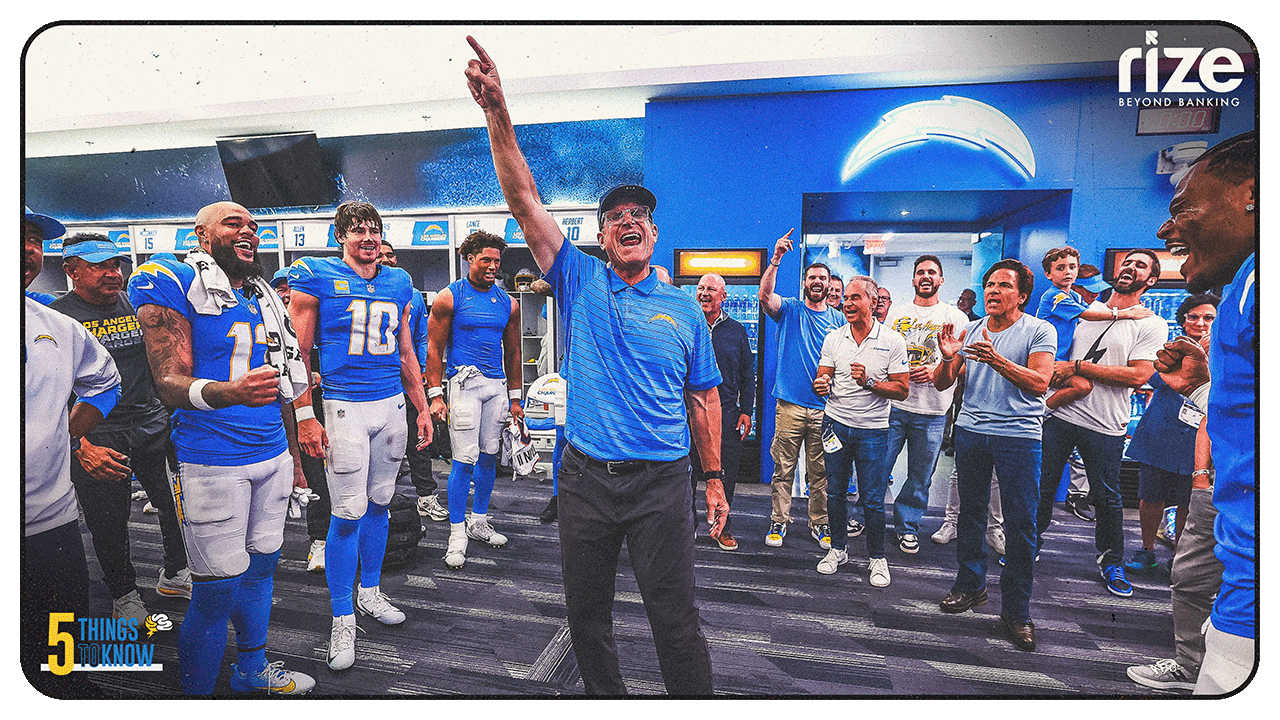
In the vibrant tapestry of public figures, what truly resonates with us isn’t always their monumental achievements alone, but the winding paths they navigate, the obstacles they overcome, and the sheer humanity they display along the way. We find ourselves drawn to stories of resilience, unexpected turns, and the quiet determination that shapes a life. It’s in these moments of vulnerability and triumph that a true connection is forged, making a personality not just famous, but genuinely relatable.
Drew Brees, a name synonymous with football greatness, has a story that extends far beyond the statistics and accolades of the gridiron. His journey, marked by both personal challenges and professional setbacks, has shaped him into a figure whose experiences echo universal struggles and aspirations. From his humble beginnings to career-threatening injuries and the ultimate redemption, Brees’s narrative offers a profound insight into the making of a true champion, whose character shines just as brightly as his arm talent.
As we delve into the early chapters of his life and career, we uncover the foundational elements that built the man he became – a man who, even after stepping away from professional play, continues to engage and inspire through his various roles, embodying the spirit of a truly relatable voice. His path wasn’t always clear, but his unwavering commitment to excellence and his ability to bounce back from adversity are what truly set him apart.

1. **Early Life and Athletic Roots: The Foundation of Determination**Drew Brees was born in Dallas, Texas, on January 15, 1979, into a world that would soon present him with significant personal challenges. When he was just seven years old, his parents divorced, leading to a “very tough and challenging life” as he split his time between both parents’ homes. This early experience of upheaval undoubtedly shaped his resilience and reliance on his inner strength, fostering a deep bond with his younger brother, Reid, who was a constant source of support.
Despite the complexities of his childhood, Brees was immersed in an environment rich with athletic tradition, a heritage that would undoubtedly fuel his own ambitions. His father, Eugene Wilson “Chip” Brees II, had played basketball at Texas A&M, while his mother, Mina Ruth, was a former all-state athlete excelling in three sports during her high school years. This genetic predisposition for athleticism was a powerful undercurrent in his early development.
The athletic influence extended even further through his maternal lineage. His maternal uncle, Marty Akins, was an All-American starting quarterback for the Texas Longhorns, establishing a high bar for family achievement in football. Moreover, his maternal grandfather, Ray Akins, held the remarkable distinction of having the third-most victories as a Texas high school football coach, a testament to decades of dedication and success. Even his younger brother, Reid, found collegiate success as an outfielder for the Baylor Bears baseball team, which made the 2005 College World Series. This familial drive for excellence created a powerful, almost predestined path for Drew.
Read more about: John Amos: Celebrating the Enduring Legacy of a Groundbreaking Actor and Cultural Icon

2. **Academic Excellence and Character Development: More Than Just an Athlete**Brees’s journey was never solely defined by his athletic prowess; from an early age, he demonstrated a profound commitment to his education and personal growth. When considering college offers, he consciously chose Purdue University, not just for its emerging football program, but specifically for its “highly rated academics.” This decision speaks volumes about his priorities, highlighting a desire for intellectual rigor alongside athletic ambition.
During his time at Purdue, Brees not only excelled on the field but also dedicated himself to his studies, ultimately graduating in 2001 with a degree in industrial management. His collegiate experience was well-rounded, as evidenced by his membership in the Sigma Chi fraternity, fostering leadership and community engagement beyond the classroom and practice field. This balance underscored a drive for comprehensive self-improvement that set him apart from many of his peers.
His academic achievements were numerous and distinguished. Brees earned Academic All-America honors as a senior, a rare feat for a high-profile athlete, and was awarded Academic All-Big Ten honors a record three times. He was also initiated into Mortar Board, a prestigious national honor society, and received the Big Ten Medal of Honor and the NFF National Scholar-Athlete Award. Purdue further recognized his contributions by awarding him the Leonard Wilson Award for unselfishness and dedication, cementing his reputation as a person of exceptional character and commitment.

3. **Overcoming the Odds: The Pre-Draft Doubts and High School Injury Resilience**Drew Brees’s path to football stardom was far from conventional; he didn’t even play tackle football until high school, instead participating in flag football at St. Andrew’s Episcopal School alongside future actor Ben McKenzie. This relatively late start meant he had to rapidly develop his skills and prove his capabilities, often against those who had been playing the sport for much longer. Intriguingly, at one point, he was seriously considering playing college baseball rather than football, showcasing his diverse athletic talents.
His high school career was dramatically interrupted by a significant setback: in his 11th grade year, Brees “blew out his knee.” For any aspiring athlete, such an injury can be a devastating blow, potentially derailing their future. However, Brees demonstrated remarkable resilience, successfully “overcoming the ACL tear” to return to the field stronger and more determined than ever. This early experience with a serious injury foreshadowed later career challenges and provided invaluable lessons in perseverance.
Upon his return, Brees led the Austin Westlake High School football team to an unforgettable 16–0 record, culminating in a state championship. His performance was so outstanding that he was selected as the Texas High School 5A Most Valuable Offensive Player in 1996. During his two seasons as a starter, Westlake boasted an incredible 28–0–1 record, and Brees himself completed an impressive 314 of 490 passes for 5,461 yards and 50 touchdowns, including 3,528 yards and 31 touchdowns in his senior year alone.
Despite this stellar high school record and undeniable success, Brees faced an early and perhaps surprising dose of skepticism. He had hoped to follow in his father’s and uncle’s footsteps and play for the Texas Longhorns or Texas A&M Aggies, but despite his achievements, he “was not heavily recruited.” This rejection from his preferred schools, forcing him to choose between only two offers (Purdue and Kentucky), served as an early indicator of the challenges he would face in convincing others of his potential.

4. **The Purdue Prodigy: Setting Records and Leading the Boilermakers**Choosing Purdue University, primarily for its strong academic reputation, proved to be a pivotal decision in Drew Brees’s development. After a relatively uneventful freshman season, he was given his first start by head coach Joe Tiller during his sophomore year. Brees quickly became an indispensable part of Tiller and Jim Chaney’s innovative, unorthodox “basketball on grass” spread offense, a system that perfectly suited his burgeoning talents and allowed him to showcase his unique skillset. His leadership was recognized early, as he served as offensive captain during both his junior and senior years.
Brees’s college career at Purdue was nothing short of historic, as he systematically rewrote the record books. In the 1998 season, in a game against Wisconsin, he tied an NCAA single-game record with 55 completions and set the NCAA record for pass attempts in a single game with 83. By the time he left Purdue, he held Big Ten Conference records in passing yards (11,792), touchdown passes (90), total offensive yards (12,693), completions (1,026), and attempts (1,678), firmly establishing his legacy as one of the conference’s all-time great quarterbacks.
His senior year in 2000 was particularly memorable, as he led the Boilermakers to exhilarating last-minute upsets against formidable opponents like top-ranked Ohio State and Michigan. These victories paved the way for Purdue’s first Big Ten championship since 1967, which they shared with Michigan and Northwestern. The dramatic Ohio State game, with Brees’s 64-yard touchdown pass to Seth Morales with just 1:55 remaining, is still widely remembered and celebrated, even being replayed on ESPN Classic. His leadership elevated the program to a #9 ranking in the AP Poll, their highest spot since 1980, and secured an invitation to the 2001 Rose Bowl, the school’s first appearance there since 1967.
Brees’s exceptional collegiate performance garnered significant individual recognition, underscoring his talent and hard work. He was a finalist for the Davey O’Brien Award in 1999, won the prestigious Maxwell Award as the nation’s outstanding player of 2000, and was awarded the NCAA’s Today’s Top VIII Award. He also placed fourth in Heisman Trophy voting in 1999 and third in 2000, solidifying his status as one of the most exciting players in college football. His enduring impact at Purdue was later recognized with his induction into the Intercollegiate Athletics Hall of Fame in 2009, and the Big Ten Conference even named the Griese–Brees Quarterback of the Year award in his honor, a lasting tribute to his influence.

5. **Chargers Challenges: Battling for Stardom and a Career-Threatening Injury**Despite his remarkable college success, Drew Brees’s entry into the professional ranks was met with a degree of skepticism that saw him slide further than expected in the 2001 NFL draft. Projections had placed him as a mid-to-late first-round pick, but “concerns about his relatively short stature for a professional quarterback (6’0), a perceived lack of arm strength, and a sense that he had succeeded in college in a spread offense” caused him to fall to the second round. He was eventually chosen by the San Diego Chargers with the 32nd overall pick, the second quarterback selected behind Michael Vick.
His initial seasons with the Chargers were far from smooth. In his rookie year, Brees served as backup to veteran Doug Flutie. While he made his professional debut and threw his first career touchdown pass in relief of an injured Flutie, he saw limited action. The 2002 season saw Brees named the starter, but after a promising 6–1 start, the team faltered to an 8–8 record. By 2003, after a “disappointing 1–7 start,” Brees was temporarily replaced by Flutie, highlighting the pressure and uncertainty he faced in establishing himself in the league.
The acquisition of NC State’s Philip Rivers after the 2004 NFL draft squarely put Brees’s career with the Chargers “in jeopardy.” This created a highly publicized quarterback controversy, but Brees, ever the competitor, responded with an exceptional training camp and preseason performance, while Rivers held out. This effectively “guaranteeing Brees the job to begin the season,” a testament to his mental fortitude under immense pressure. He seized the opportunity, leading the Chargers to a 12–4 record, earning a Pro Bowl selection and the NFL Comeback Player of the Year award, completing 65.5% of his passes for 3,159 yards with 27 touchdowns to only seven interceptions.
However, the reprieve was short-lived. After the 2004 season, Brees became a free agent, and the Chargers, already heavily invested in Rivers, were reluctant to commit long-term. They designated him a franchise player for 2005, offering a one-year, $8 million contract, but the underlying uncertainty remained. Then, in the final game of the 2005 season against the Denver Broncos, disaster struck: “Brees tore his labrum while trying to pick up his own fumble after being hit by Broncos safety John Lynch.” Subsequent reports confirmed “additional partial rotator cuff damage,” a potentially career-ending injury to his throwing shoulder.

6. **The Crossroads Moment: A Shoulder Injury and a New Beginning in New Orleans**The torn labrum and partial rotator cuff damage to his throwing shoulder, sustained in the final game of the 2005 season, cast a long, dark shadow over Drew Brees’s professional future. He underwent arthroscopic surgery on January 5, 2006, but the severity of the injury meant his recovery was uncertain. The Chargers, wary of committing significant long-term funds to a quarterback with a potentially compromised throwing arm, offered him a “five-year, $50 million contract that paid $2 million in base salary the first year and the rest heavily based on performance incentives.” This offer, heavily contingent on his performance and recovery, signaled their hesitation.
Faced with this uncertain proposition, Brees explored his options, engaging with other interested teams. The New Orleans Saints and the Miami Dolphins emerged as the primary suitors. For Miami, the concern over Brees’s injury proved insurmountable; their doctors “suggested the team should not sign him because of the injury,” leading them to pull out of negotiations and trade for Minnesota Vikings quarterback Daunte Culpepper instead. This rejection, based on medical assessment, could have been a crushing blow to Brees’s confidence and career prospects.
However, the New Orleans Saints, under the visionary leadership of new head coach Sean Payton, saw something different. They were willing to take a calculated risk on Brees, offering a more attractive deal that included “$10 million in guaranteed money the first year and a $12 million option the second year.” This act of faith was transformative, signaling that a franchise believed in his potential to recover and thrive, despite the significant medical red flags that had deterred others.
On March 14, 2006, Drew Brees signed a “six-year, $60 million deal with the Saints,” marking the most significant turning point in his career. This decision not only offered him a second chance at an elite NFL career but also inadvertently set the stage for one of the most iconic and successful partnerships in professional sports history. The Dolphins’ decision to pass on Brees would famously be cited as a reason for Nick Saban’s resignation to coach for Alabama, underscoring the monumental impact of New Orleans’ gamble. For Brees, it was a fresh start in a city yearning for hope and revitalization after the devastation of Hurricane Katrina, a symbiotic relationship that would define the rest of his legendary playing days.

7. **The New Orleans Renaissance Man: Sparking a City’s Comeback (2006-2008)**Signing with the New Orleans Saints wasn’t just a career move for Drew Brees; it was a deeply symbolic moment for a city still reeling from Hurricane Katrina’s devastation. Under the fresh leadership of first-year head coach Sean Payton, Brees became the beacon of hope and resilience that New Orleans desperately needed. His inaugural year, 2006, saw an astonishing turnaround: the Saints, who had limped to a 3-13 record the previous season, roared back with a 10-6 record, clinching the NFC South division title and securing a coveted first-round playoff bye. This immediate success wasn’t just about football; it was about the spirit of a community finding its feet again, with Brees at the helm.
His impact was instant and undeniable, earning him his first NFC Offensive Player of the Week honor with a stellar 314 passing yards and three touchdowns against the Tampa Bay Buccaneers. Later that season, he threw for a remarkable 510 passing yards against the Cincinnati Bengals, a single-game franchise record and the sixth most in NFL history at the time. Brees capped off the year with a league-leading and franchise-record 4,418 passing yards, 26 touchdowns, and a 96.2 passer rating, culminating in a Pro Bowl selection and First-team All-Pro honors. The Associated Press recognized his profound influence, naming him first runner-up for league MVP, and he notably shared the prestigious Walter Payton NFL Man of the Year Award with former teammate LaDainian Tomlinson, underscoring his immediate community commitment.
While the 2007 season saw a rocky 0-4 start, Brees once again demonstrated his ability to rally, leading the Saints back to a .500 record by Week 8 and ultimately setting an NFL record for pass completions in a single season with 440. The following year, 2008, solidified his status as an elite quarterback, as he passed for an incredible 5,069 yards, becoming only the second quarterback in NFL history to break the 5,000-yard barrier in a single season. This remarkable feat, just 15 yards shy of Dan Marino’s then-NFL record, earned him the AP 2008 Offensive Player of the Year award and his third career Pro Bowl selection, cementing his place not just as a great player, but as a driving force behind a city’s renewal.

8. **Super Bowl XLIV: A Champion’s Crown and a City’s Roar (2009)**The 2009 season was nothing short of magical, a narrative that felt almost pre-written for Drew Brees and the New Orleans Saints. It began with a bang, as Brees tied a franchise record with six touchdown passes against the Detroit Lions, setting the tone for an electrifying year. The Saints roared out to a franchise-best 13-0 start, fueled by Brees’s precision and leadership, a run that included dominant victories over formidable opponents like the New York Giants and New England Patriots, where he notably posted a perfect passer rating of 158.3. His individual brilliance earned him multiple NFC Offensive Player of the Week awards and cemented his reputation as one of the game’s most efficient passers.
Brees finished the regular season with an NFL-record completion percentage of 70.62%, a testament to his unparalleled accuracy and command of the Saints’ potent offense. This stellar performance earned him numerous accolades, including a Pro Bowl selection, the Bert Bell Award, and a runner-up finish for both AP MVP and Offensive Player of the Year. However, the true prize awaited in the postseason, where Brees continued to shine, guiding the Saints through decisive victories against the Arizona Cardinals and a thrilling overtime triumph against the Minnesota Vikings in the NFC Championship Game, propelling the franchise to its first-ever Super Bowl appearance.
On February 7, 2010, the New Orleans Saints, led by their quarterback, achieved the impossible. In Super Bowl XLIV, they defeated the Indianapolis Colts 31-17, marking the franchise’s first league championship. Brees, with a record-tying 32 pass completions and two crucial touchdown passes for 288 yards, was deservingly named the Super Bowl Most Valuable Player. This victory was more than just a football championship; it was a profound emotional release for New Orleans, a symbol of recovery and triumph against all odds. His role in this victory and his ongoing charitable efforts in the city were further recognized when he was named the 2010 Sports Illustrated Sportsman of the Year and AP Male Athlete of the Year, solidifying his enduring legacy both on and off the field.

9. **Rewriting the Record Books: Brees’s Unprecedented Statistical Dominance (2010-2011)**Even after reaching the pinnacle of professional football, Drew Brees continued to redefine quarterback play, embarking on a relentless assault on the NFL’s record books. The 2010 season, while ending in a Wild Card playoff exit, still saw Brees pass for over 300 yards seven times and lead the Saints to an 11-5 record, demonstrating consistent high-level performance with 4,620 yards and 33 touchdowns, earning him a fifth Pro Bowl selection. However, it was 2011 that truly cemented his statistical dominance, a year where he achieved the rare “Triple Crown,” leading the NFL in completion percentage, passing yards, and passing touchdowns.
That season, Brees systematically dismantled long-standing records. He broke Dan Marino’s 27-year-old record for most passing yards in a single season (5,084), surpassing it in Week 16 with a touchdown pass to Darren Sproles. He ultimately finished the year with an astounding 5,476 passing yards, outdueling Tom Brady, who also surpassed Marino’s mark. Beyond yards, Brees extended his streak of consecutive games with a touchdown pass to 42 games and became the first quarterback in NFL history to throw for five touchdowns, 400+ yards, while maintaining an 80% completion rate in a single game. This level of consistent, record-breaking performance underscored his place among the league’s all-time greats.
His weekly performances were regularly honored with NFC Offensive Player of the Week awards, highlighting his consistent excellence. Brees also became the first quarterback in NFL history to eclipse the 4,000-yard mark in the first 12 games of a season and the first to achieve four consecutive seasons with 4,000+ yards and 30+ touchdown passes. Even in playoff losses, his individual brilliance shone, as evidenced by his 466 passing yards against the Detroit Lions in the Wild Card Round, setting an NFL record for passing yards in a regulation playoff game. By the end of 2011, Brees was not just a champion but a statistical marvel, revered by his peers, who ranked him as the second-best player in the league on the NFL Top 100 Players list for 2012.

10. **Navigating Uncharted Waters: Bountygate, Big Contracts, and Breaking Unitas’s Record (2012-2013)**
The 2012 season presented Drew Brees and the Saints with unprecedented challenges, as the organization navigated the fallout from ‘Bountygate,’ resulting in the year-long suspension of head coach Sean Payton. Despite this turmoil, the Saints demonstrated their unwavering faith in Brees, signing him to a groundbreaking five-year, $100 million contract that included the largest amount of guaranteed money in NFL history at $60 million. This commitment reflected his irreplaceable value, even as the team began the season without its full coaching staff, starting with a difficult 0-4 record.
Amidst the team’s struggles, Brees delivered one of the most iconic moments of his career in Week 5 against his former team, the San Diego Chargers. With a 40-yard touchdown pass to Devery Henderson, Brees broke Johnny Unitas’s 52-year-old record for consecutive games with at least one touchdown pass, extending the streak to an incredible 48 games. The moment was so significant that Unitas’s son, Joe, was present to witness the historic achievement, adding a poignant layer to Brees’s already legendary journey. This accomplishment underscored his enduring consistency and unwavering ability to find the end zone.
While the record-breaking streak eventually ended at 54 games with a challenging performance against the Atlanta Falcons, Brees continued to redefine consistency. In 2012, he achieved his seventh straight 4,000-yard passing season, surpassing Peyton Manning’s mark, and his fifth straight season with at least 30 touchdown passes and 4,000 yards passing – both NFL records. Despite the Saints’ 7-9 record, largely due to a historically struggling defense, Brees still passed for 5,177 yards and 43 touchdowns. The 2013 season brought renewed success, with the Saints starting 5-0, and Brees further cementing his place in history by becoming the fastest player ever to reach the 50,000-yard club in just 183 games, a testament to his incredible longevity and productivity, earning him his eighth career Pro Bowl nod.

11. **The Ageless Arm: Sustained Brilliance and a Legacy Etched in Yards (2014-2018)**Even as the New Orleans Saints experienced fluctuations in team success, Drew Brees’s individual performance remained remarkably consistent, showcasing an enduring brilliance that defied age and external circumstances. The 2014 season, which Brees candidly described as his “most frustrating” despite the team’s 7-9 record, still saw him tie for the league’s most passing yards with 4,952, a testament to his relentless drive. During this period, he also surpassed John Elway to move into fourth place on the career passing yardage list and became the NFL’s all-time leader in completion percentage at 66.21%, a benchmark that highlighted his precision.
His streak of consecutive seasons with at least 30 touchdown passes extended to an NFL-record seven straight years in 2014, coupled with an astonishing nine consecutive seasons of 4,000 passing yards. The 2015 season further solidified his individual records, with Brees becoming the first player in NFL history to throw for 5,000 yards five times, and also setting a new league record with ten games of 450+ passing yards. These milestones weren’t just about individual glory; they were about consistently performing at an elite level, year after year, in a league known for its demanding physical toll.
As his career progressed, Brees continued to chase and break some of the NFL’s most hallowed records. In 2017, he surpassed Brett Favre to become the all-time career leader in passing yards, a monumental achievement that underscored his longevity and prolific passing ability. This record, along with becoming the all-time leader in completions, was further enhanced in 2018 when he surpassed Peyton Manning’s career passing yards record, cementing his position as the most prolific passer in NFL history. His sustained excellence during these years, even as the team had its ups and downs, showcased a relentless pursuit of greatness and an unwavering commitment to his craft.

12. **Beyond the Huddle: Brees’s Impactful Transition to Life After Football (2019-Present)**As Drew Brees’s illustrious playing career neared its conclusion, his impact continued to be felt, not just through his on-field heroics but also in his thoughtful transition to new roles. The 2019 season saw him set yet another NFL record, achieving the highest completion percentage in a single season at an incredible 74.3%, a testament to his surgical precision even in his later years. His final season in 2020, while marked by unique challenges, still saw him contribute significantly, passing for 2,979 yards and 24 touchdowns, leaving an indelible mark on the game.
After 20 seasons in the NFL, the majority spent as the heart and soul of the New Orleans Saints, Brees announced his retirement, signaling the end of an era. This wasn’t an end to his public life, however, but a pivot to new avenues where his intelligence, passion, and relatable demeanor could continue to shine. He swiftly transitioned into the role of an analyst for NBC Sunday Night Football, sharing his deep knowledge and insightful observations with a national audience. This natural progression allowed fans to continue connecting with the charismatic personality they had come to admire.
Beyond the broadcasting booth, Brees maintained his ties to his collegiate roots, serving as an interim assistant football coach with Purdue in 2022. This role underscored his continued commitment to the sport and his desire to mentor the next generation of athletes. Drew Brees’s journey, from a doubted prospect to a Super Bowl champion, record-breaker, and now an influential voice in media and coaching, makes him profoundly relatable. His story is one of consistent perseverance, demonstrating that success isn’t just about talent, but about character, resilience, and an unwavering belief in oneself, lessons that resonate far beyond the football field.
Drew Brees’s story is a compelling narrative of perseverance, triumph, and unwavering dedication, both on and off the field. From battling early doubts about his abilities to overcoming career-threatening injuries, his path has been anything but smooth. Yet, through every challenge, Brees has exemplified the spirit of a true champion, transforming not only a football franchise but also inspiring a city’s resurgence. His unparalleled records, his Super Bowl victory, and his continued contributions in his post-playing career all speak to a man whose journey is rich with lessons of resilience, integrity, and the power of believing in oneself. It’s this authentic journey, marked by both struggle and extraordinary success, that truly makes Drew Brees a figure we can all look up to, and undeniably, the most relatable talk show host in our hearts.




